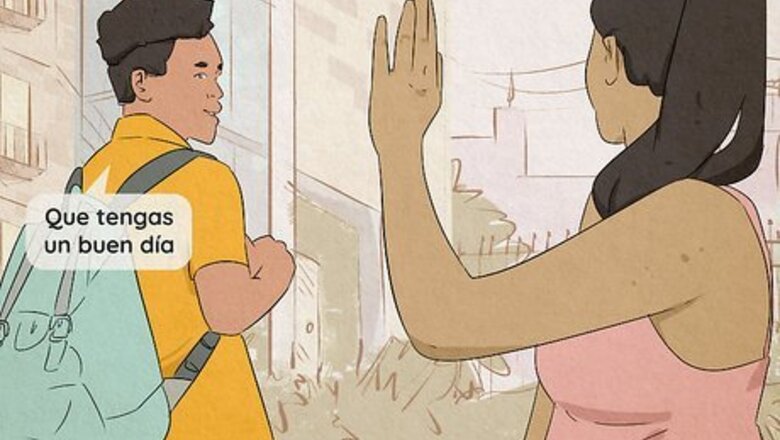
views
Saying “Have a Good Day” Informally
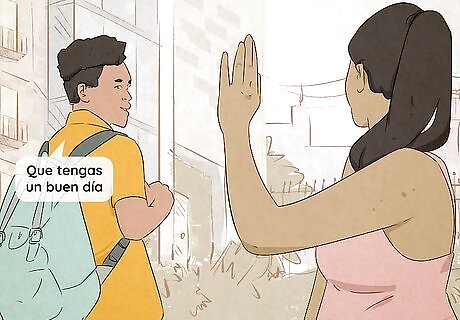
“Que tengas un buen día” (kay TEN-gahs oon bwen DI-ah): This is the standard translation of “have a good day” in Spanish. Like in English, you can use this expression at the end of a conversation with friends or strangers.
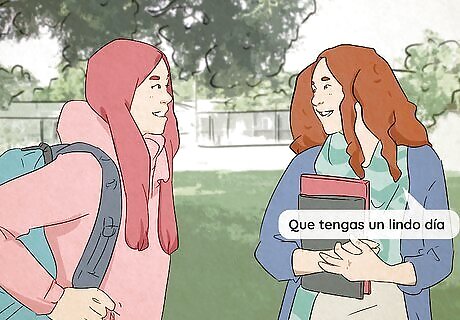
“Que tengas un lindo día” (kay TEN-gahs oon LEEN-doh DI-ah): For people you’re on closer terms with, you can swap out “buen día” for “lindo día” (LEEN-doh DI-ah), which means “beautiful day.” “Buen día” can seem a little formal, although it’s still appropriate, so try out this alternative if you’re speaking with friends. Instead of “lindo,” you can also say “feliz día” (FELL-ees DI-ah) or “bonito día” (bohn-EE-to DI-ah), which mean “happy day” and “lovely day” respectively. These expressions are likewise more friendly than the standard “buen día.”

“Que pases un buen día” (kay PAHS-es oon bwen DI-ah): This is a somewhat less common alternative for “que tengas un buen día,” and has essentially the same meaning. Its literal translation is something like, “I hope a good day happens for you,” which sounds much less strange in Spanish than English. For a friendlier greeting, you can trade “buen” for “feliz,” “lindo,” or “bonito.”
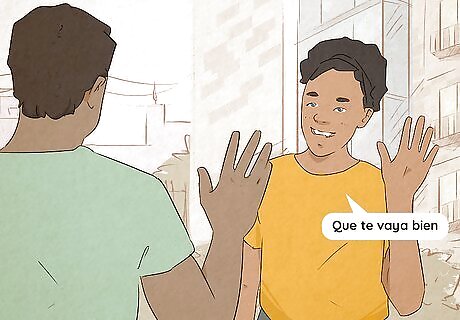
“Que te vaya bien” (kay tay VAI-ah BEE-ehn): The closest English translation of this phrase would be “have a good one.” Although in this context it’s another way of saying bye, it can also simply be a way of wishing someone luck—you might say “que te vaya bien” if someone tells you about an upcoming exam, for example.
Saying “Have a Good Day” Formally
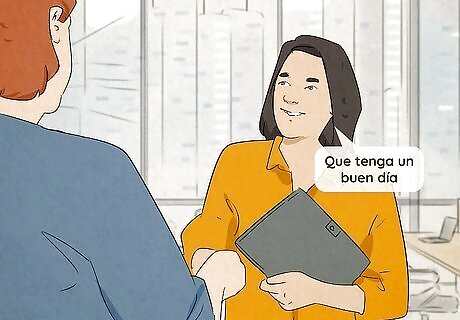
“Que tenga un buen día” (kay TEN-gah oon bwen DI-ah): If you’re speaking to someone older than you or to an authority figure, try using the formal variation of “que tengas un buen día” instead. You may also see this form referred to as the “usted” form. Don’t worry too much if you mess this up—Spanish speakers tend to use the formal register of the language far less than speakers of languages like French or Russian.
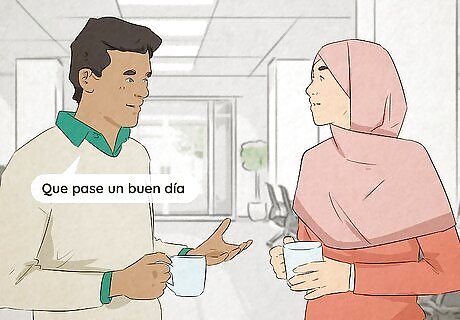
“Que pase un buen día” (kay PAHS-eh oon bwen DI-ah): For an alternative way to wish someone a good day, try out this expression. It’s less common than “que tenga un buen día,” and so by using it, you can come across as a Spanish speaker with a more sophisticated vocabulary.
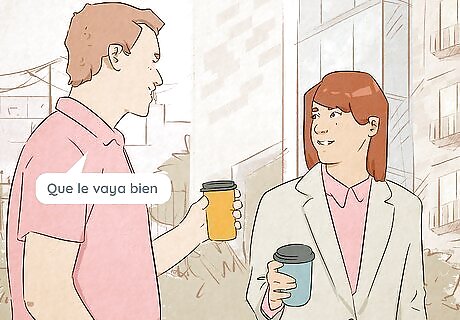
“Que le vaya bien” (kay lay VAI-ah BEE-ehn): For a more casual expression that’s useful in many different contexts, try this phrase out. Think of it as meaning something along the lines of “hope it goes well for you,” which makes it a handy substitute for “have a nice day.” To use this expression in formal Spanish, replace the “te” of “que te vaya bien” with “le.”
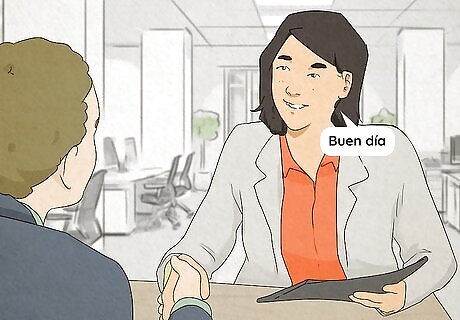
“Buen día” (bwen DI-ah): This expression comes off as quite formal, and is commonly used as a greeting in official settings. It literally translates to “good day,” and unlike these other expressions, you’re more likely to hear it at the beginning of an interaction than at the end. “Buen día” is an expression that doesn’t need to decline grammatically (change its form as a noun), meaning that you can use it when speaking with either one or multiple people.
Saying “Have a Good Day” to Multiple People
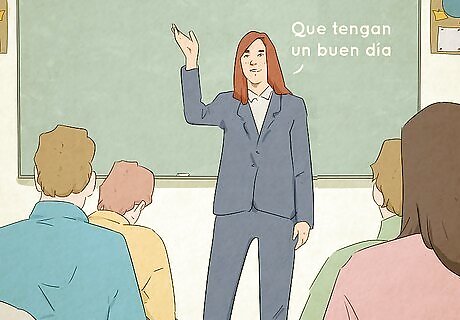
“Que tengan un buen día” (kay TEN-gahn oon bwen DI-ah): If you’re wishing multiple people at once a good day, you’ll have to conjugate (change the form of the verb) the verb “tener” into the second-person plural, which refers to multiple “you”’s. There’s no difference in formal and informal Spanish when speaking to multiple people at once. In Spain, the second-person plural conjugates differently. If you’re in Spain, instead say, “Que tengaís un buen día” (kay ten-gah-EES oon bwen DI-ah). If you’re closer to the person you’re wishing a nice day, you can also use “feliz,” “lindo,” or “bonito” in place of “buen.”
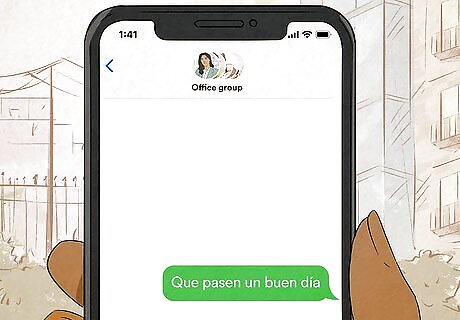
“Que pasen un buen día” (kay PAHS-ehn oon bwen DI-ah): If you’re interested in trying out a less common alternative to “que tengan un buen día,” use the verb “pasar” instead. This expression is slightly more casual than “que tengan un buen día,” but is still appropriate for all occasions. In Spain, use the expression “que paseís un buen día” (kay pahs-eh-EES oon bwen día) instead. For people with whom you’re close, try using “feliz,” “lindo,” or “bonito” instead.

“Que les vaya bien” (kay lays VAI-ah BEE-ehn): When speaking to multiple people at once, use this alternative for “que le vaya bien.” This expression translates to “have a good one” or “hope it goes well” for when you’re addressing multiple people at once. In this case, the pronoun “le” needs to be changed to “les,” in other words, made plural.

















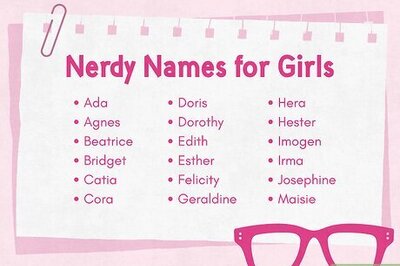

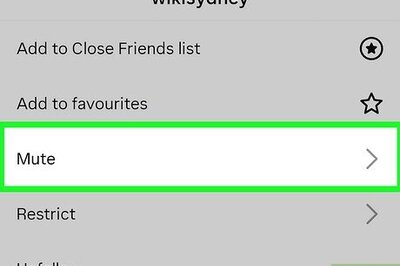
Comments
0 comment